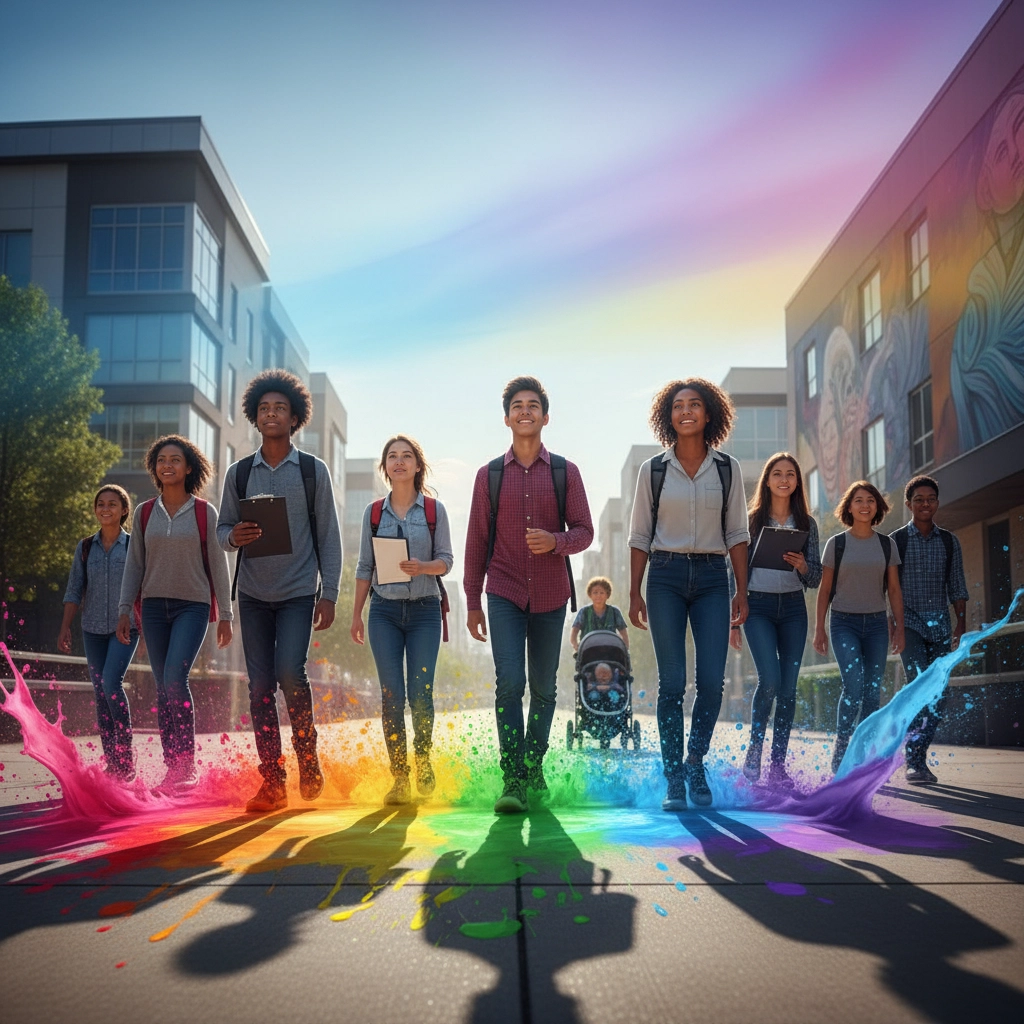Community Connections for Youth Explained in Under 3 Minutes: What Every Southside Chicago Family Should Know
- alpeshp1
- Oct 27
- 5 min read
If you're a parent or caregiver on Chicago's Southside, you've probably wondered where to turn when your teen needs extra support. Maybe they're struggling in school, dealing with stress, or you're simply looking for positive activities to keep them engaged. Here's what every family should know: community connections for youth aren't just programs: they're lifelines that can transform your family's future.
What Are Community Connections for Youth?
Think of community connections as your neighborhood's best-kept secret, except it's not really a secret: it's a network of caring people and organizations working together to help young people thrive. These programs serve as bridges, connecting families like yours to the resources, support, and opportunities that might otherwise feel out of reach.
At its heart, community connections means having someone in your corner who knows your community, understands your challenges, and believes in your family's potential. It's about creating real relationships that last, not just handing out flyers and calling it a day.

Why Southside Chicago Families Need This Now More Than Ever
Let's be honest: growing up on the Southside comes with unique challenges. From limited access to quality after-school programs to dealing with violence in our neighborhoods, our young people face obstacles that can feel overwhelming. But here's what many families don't realize: there are people and organizations specifically designed to help navigate these challenges.
The reality is that systemic issues like poverty, inadequate school funding, and limited job opportunities create barriers that no family should have to face alone. Community connections programs recognize this and work to level the playing field by providing direct access to resources that can make a real difference.
"Families know what's best for themselves," says one community connector specialist. This philosophy drives everything these programs do: they're not here to tell you what your family needs, but to help you access what you already know would help.
What Services Are Actually Available?
Community connections programs offer a wide range of support that goes far beyond what most families expect. Here's what you can typically access:
Educational Support: This isn't just tutoring (though that's available too). We're talking about advocacy when your child faces unfair treatment at school, help navigating special education services, and connections to educational programs that can set your teen up for college or career success.
Mental Health Resources: Finding affordable, culturally appropriate mental health support can feel impossible. Community connectors help families access counseling services, support groups, and crisis intervention resources without the usual red tape.
Basic Needs Support: Sometimes the biggest barrier to a young person's success is something as simple as not having enough food at home or facing housing instability. These programs connect families to food pantries, housing assistance, and help with utilities.
Job Training and Employment: For older teens, getting that first job or learning marketable skills can be game-changing. Community connections programs often partner with local businesses and training programs to create pathways to employment.
After-School and Summer Programs: Safe, engaging activities that keep young people busy while teaching valuable life skills: from leadership development to arts programs to sports leagues.

How Does It Actually Work?
The best part about community connections programs is how simple they make everything. Here's typically how it works:
Step 1: You Connect: Reach out to a program in your area. This might happen through a school referral, a community event, or just by walking into a local organization.
Step 2: You Talk: A community connector sits down with you and your family to understand what's going on and what kind of support would be most helpful. This isn't an interrogation: it's a conversation.
Step 3: You Plan Together: Based on what you've shared, you and your connector identify specific goals and the resources that can help you reach them.
Step 4: You Access Support: Your connector helps you navigate the system, makes introductions, and ensures you can actually access the services you need.
Step 5: You Stay Connected: This isn't a one-and-done situation. Your connector checks in regularly to see how things are going and help you access new resources as your needs change.
The key difference between community connections and other social services? These programs follow your family's lead. You decide what support you want and how much you want to participate.
Real Impact in Real Families
Organizations like True Believers Community Connections have been making a difference on the Southside since 2013. They've seen firsthand how connecting families to resources creates ripple effects that transform entire communities.
Families consistently report feeling more aware of available resources after working with community connectors. More importantly, they actually succeed in accessing the help they identify as needing: something that's often much harder when families try to navigate complex systems alone.

The impact goes beyond just accessing services. Young people who participate in community connections programs often become leaders in their own communities. They learn to advocate for themselves and others, develop job skills, and build the kind of confidence that comes from knowing they have people who believe in them.
Breaking Down the Barriers
One of the biggest misconceptions about community support programs is that they're only for families in crisis. That's simply not true. Community connections programs work with families at all stages: from those facing immediate emergencies to families who are doing okay but want to help their teens reach their full potential.
Another barrier is the fear that accepting help somehow reflects poorly on your family. The truth is, accessing community resources shows strength, not weakness. It shows you're willing to do whatever it takes to help your family succeed.
How to Get Started Today
If you're ready to explore what community connections can do for your family, here are your next steps:
Reach out directly to organizations serving your area of the Southside
Ask questions about what services are available and how the process works
Start small if you're not sure: maybe just connect for information about after-school programs or summer activities
Bring your teen into the conversation when appropriate: their input matters too
Remember, these programs are voluntary and free. You maintain control over how much or how little you want to participate.

The Bottom Line for Southside Families
Community connections for youth programs exist because people understand that every young person deserves the chance to succeed, regardless of their zip code or family income. These programs recognize that with the right support, guidance, and opportunities, young people on the Southside can achieve anything.
The most successful families are often those who recognize that accepting support isn't about admitting weakness: it's about being smart enough to use every resource available to help their children thrive.
Your family doesn't have to navigate challenges alone. There are people in your community specifically trained to help, and they're waiting for your call.
Ready to learn more about how community connections can support your family? Visit True Believers Community Connections to explore programs specifically designed for Southside Chicago families, or stop by one of our community events to meet the team in person. Your family's success story starts with taking that first step.



Comments